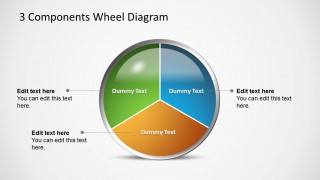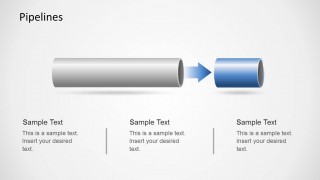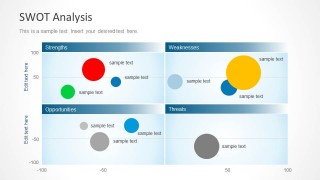Learn more how to embed presentation in WordPress
Copy and paste the code below into your blog post or website
Copy URL
Embed into WordPress (learn more)
Comments
comments powered by DisqusPresentation Slides & Transcript
Presentation Slides & Transcript
Power QualityJulie E. VanDyne, P.E.
Power QualityDefine Power QualitySteady State VoltageWaveshape/HarmonicsLoad Issues Related to Waveform DistortionConsequences of Harmonic Distortion Source Issues Related to Waveform DistortionCapacitance/Power Factor CorrectionTransients/Transient Protection
Power QualitySection I - Steady State VoltageDefine Power Quality Identify Voltage LevelsSection II - Waveshape Harmonics Define what they are Causes ImplicationsSection III - Harmonic Control Source Issues MitigationSection IV - Transient Voltage Surge suppression Devices Application Design
Power QualitySection I Steady State Voltage
Power Quality Defined Quality of VoltageSufficient MagnitudeFrequencyWaveshape
Power Quality Defined Quality of VoltageSufficient MagnitudeFrequencyWaveshapeSufficient Power Quality Equipment Should Operate Properly
Alternate Definition Power Quality We have Quality Power when the user is satisfied with the cost, and with the operation of equipment.Qualitative!
Power QualityMagnitudeWaveshape (Harmonics)Frequency
Voltage TransientSteady State
Magnitude VoltagesClassified as Low, Medium, or HighLow - 600 Volts and belowIncludes 480, 240, 120 etc.Medium > 600 Volts; <34,500 VoltsTypically 4 and 12 KVHigh > 34,500 VoltsDelta / Wye
Magnitude Levels (Steady State) Voltage Quality can be affected by equipment ratingsPlant equipment: 440 v.s. 460 v.s. 480Source generally 480
Power QualityVoltage MagnitudeSteady State VoltageIEEECBEMAUtilityCBEMA Curve
CBEMA Curve
CBEMA CurveCBEMA is falling from favorITECANSIRemember that all curves are a tool to help evaluate, none are definitive
Magnitude Levels (Steady State) Engineering StandardsIEEE Typically +/- 5%CBEMA +6% -13%UtilityTypically +/- 5% though varies
MagnitudeItems to rememberVoltage level ranges often dictated by individual equipmentSteady State over/under voltage often the problemEquipment doesn’t always subscribe to CBEMA or IEEE+6 to -10% as a Guideline
Magnitude
Power QualitySection II Waveshape Harmonics
HarmonicsPrimer Fourier - French Mathematician Describe any waveshape as the sum of a fundamental sinusoidal wave and an infinite series of harmonic sinusoidal waves
HarmonicsHarmonicsDefine what they areHow they come about in Power SystemsCharacteristics of Individual HarmonicsMotor Drive SystemsEffects on power systems - Consequences
HarmonicsFundamental
HarmonicsFundamental and Third Harmonic
HarmonicsFundamental and Fifth Harmonic
HarmonicsFundamental and Seventh Harmonic
HarmonicsLinear Load Linear Voltage DropNo Waveshape DistortionNon Linear Loads Non Linear Voltage DropWaveshape Distortion
HarmonicsLinearNon - LinearLinear vs. Non Linear Loads
HarmonicsSwitching Mode Power Supply
HarmonicsLinear Vs. Non-LinearLoad (I) and Source (V)(Combined System Impedance (Z))Ohms LawE = I * Z
HarmonicsLinearNon - LinearLinear vs. Non Linear Loads
Harmonic DistortionDistorted Voltage Waveform - Voltage Drop at the Third Harmonic
HarmonicsImplications of Individual Harmonics & Effects on Power System Need to further refine understanding of individual waveforms that make up the overall waveshape, and how they combine.
Harmonic DistortionFundamental Minus Third Harmonic
Harmonic DistortionFundamental Minus Third Harmonic
Harmonic DistortionDistorted Voltage Waveform - Voltage Drop at the Third Harmonic
Drive Harmonics
Drive Harmonics
Harmonic Distortion Fundamental With Voltage Drop at the Fifth and Seventh Harmonic
Harmonic RotationFundamental
Harmonic RotationThird Harmonic
Harmonic RotationThird Harmonic
Harmonic RotationFifth Harmonic
Harmonic RotationFundamental PositiveSecond NegativeThird ZeroFourth PositiveFifth NegativeSixth ZeroSeventh PositiveEighth NegativeNinth ZeroTenth PositiveEleventh NegativeTwelfth ZeroThirteenth PositiveFourteenth NegativeFifteenth Zero
ConsequencesMotorsReverse TorqueOverheating Shortened lifeTransformersIncreased LossesOverheatingShortened lifeCapacitorsIncreased CurrentOverheatingShortened lifePlant ElectronicsMisoperationFailureDowntime
Distortion LevelsIEEE 519-1992All Harmonics - Voltage (THD) <5% (<10%)
Distortion LevelsCurrent Distortion
HarmonicsReviewHarmonics are a way to describe the result of non-linear loads on the power systemBasic Limit of 5% (10%) for Voltage DistortionCurrent Distortion Limit Depends on System, Currently under review
Power QualitySection III Harmonic Control
Source IssuesSo Far - Only Load IssuesSource Impedance has been assumed to be constant/linear
Source IssuesLook at the Source of our loadsDetermine it’s characteristicsHow these characteristics impact the Distortion EquationHow we can affect the characteristicsFilteringCapacitors/Ratings/Issues
Source IssuesSource Impedance Graph - Transformer Impedance only
Source IssuesThevenin Equivalent CircuitXT
Source IssuesNorton Equivalent CircuitXT
Source IssuesNorton Equivalent CircuitXTXC
Source IssuesNorton Equivalent CircuitXTXC
Source IssuesNorton Equivalent CircuitZS
Source IssuesNorton Equivalent CircuitZS
Source IssuesNorton Equivalent CircuitXL
Source IssuesNorton Equivalent CircuitXTXLXCZS
Tuning With CapacitorsCapacitor TolerancesIn harmonic rich environments, capacitors for the low impedance path to source currentIn filter applications, capacitors also must tolerate higher voltages
Tuning With CapacitorsCapacitor TolerancesUnited States: IEEE 18-1992CapabilityLine to Neutral 110% ContinuousLine to Line 120% ContinuousCurrent 180% ContinuousVar Output 135% ContinuousEurope: CE Standards call for 8 hour period
Tuning With CapacitorsRemember that these standards are Recommendations, not Code, and can therefore be ignored by manufacturers
Tuning With CapacitorsCapacitors - Two typesDry - usually polyester film dielectricOil Filled - oil impregnated kraft paper dielectric
Tuning With CapacitorsDry Type CapacitorsPros Inexpensivelightweightenvironmentally friendly
Tuning With CapacitorsDry Type CapacitorsConsDo not meet IEEE 18-1992 standardsShort life in industrial applicationsPoor Thermal CharacteristicsShort Life Cycle: 30,000 to 80,000 Hours Within Ratings, Less Under Harsh Circumstances.Require frequent replacement (3 to 9 years)
Tuning With CapacitorsOil Filled CapacitorsPros:Meet or exceed IEEE 18-1992 StandardExcellent Thermal CharacteristicsCompetent in harsh environmentsExtremely long life - Typically 200,000 Hours > 20 years
Tuning With CapacitorsOil Filled CapacitorsConsEnvironmental issuesHave approximately 8 oz fluid per cell (50 to 100 kvar)
Adding Reactors to DrivesDrives are a non-linear impedanceAdding a reactor adds impedance to source at harmonic frequencies to diminish harmonic current
Drive HarmonicsChoke increases impedance to Drive
Adding Reactors to DrivesStrategy reduces harmonic current, and voltage drop through the supplyCan increase distortion to the driveCan ultimately cause drive not to function
Source IssuesPower System is Basically InductiveAdding capacitance creates tuned systemCareful tuning of capacitors can benefit systemTuning capacitors requires more robust capacitors
Power QualitySection IV Transient Voltage
Power System TransientsDefine TransientsIdentify Types/Categories of TransientsTypes of Problems Associated with TransientsStrategies for Accommodating TransientsGroundingTVSS
Power System TransientsBy definition, any voltage variation that is temporary. Type I or Type II on CBEMA
Power System TransientsITECANSICBEMA
Sources of TransientsLightningOn Supply ConductorsGrounded entrancesSwitching CapacitorsMotor Starting/StoppingXFMR SwitchingFaultsSystem switchingMechanical Load ChangesSCR Operation (Notching)Drive StartupWeldingOthers
Consequences of TransientsEquipment FailureEquipment MalfunctionEquipment Degradation (ultimately lead to failure)Blown Supply FuseDegradation to TVSS (Transient Voltage Surge Suppressor) Devices
Power System TransientsDivided into Two Categories (Noise)Common Mode - Noise that is common to the phase conductors. Cannot be measured line to line, only phase to ground. Often comes in on the GroundNormal Mode - Not balanced on all three phases, may be measured phase to phase or phase to ground.
Power System TransientsCan be further broken down into:Transient OvervoltageTVSSGroundingTransient UndervoltageSystem Design
Coping with TransientsProperly designed system minimizes transients Source With Sufficient Capacity Proper GroundingProperly designed system minimizes problems associated with transientsHarmonic Resonance IssuesInstallation of TVSS devices
System DesignVoltage Drop through system is within NEC (<5%)Voltage Drop during motor starts is within IEEE20 % at motor terminals10% at adjacent electronic devicesProper protective device coordination
System Design (cont.)Switched transformer feeders sized properlyWelding sufficiently isolated System Properly Grounded Often the underestimated and overlooked portion of the system
System GroundingBuilding Systems - FIPS Pub 94Consider Building as an “envelope”should have a contiguous grounding systemAll metallic supplies into or out of that envelope should be bonded to the building ground. Building Ground Bonded at Electric Entrance
System Grounding
Grounding RingEncircles BuildingIEEE Recommended for “Data Centers” 20 years ago, we wouldn’t have considered putting a IBM VM 370 in a plant environment, but today we think nothing of it.30 inches deep, 2 foot out from footer, bonded to building steel at intervals, ground rods.Bonds all incoming and outgoing equipment
Metallic SuppliesGas LinesWater LinesFire Protection LinesTelephone LinesSanitary linesStorm Drains Power Lines Parking lot lightingTruck ScalesData LinesBuilding Sub-Feeds
Ground RingResults:All equipment referenced to a common groundGround borne transient is effectively distributed throughout system simultaneouslyPlant equipment not subjected to overvoltageEffective with Most Common Mode Noise Problems
Surge SuppressionOften we think of LightningShould consider all sources of Transient Over Voltages, including:Motor SwitchingCapacitor SwitchingWeldingX-Ray EquipmentSometimes Suppression will not prevent drive nuisance trips
Surge SuppressionDrive trips on overcurrentCurrent to drive: C x dV/dt Examine the dV/dt
Surge SuppressionNFC 780 Mean Days of Thunderstorm ActivityLightning
Surge SuppressorsANSI 62.4 - 1991 Attempted to establish standards for the industryCategory C 20 kV 50 µs 20 kA 20 µsCategory B 6 kV 50 µs 3 kA 20 µs 6 kV, 500 A, 100kHz Ring WaveCategory A 6 kV, 200 A, 100kHz Ring Wave
Surge SuppressorsManufacturers literature attempts to sell productOften designed to, Differentiate, and CloudUL 1449 approved!! (UL Listed)Response Time < 2 ns (in circuit 20 - 50 ns)Current Capacity 250,000 Amps (ANSI Cat C - 20 kAmps for 20 µs)“Level I, Level II, and Level III protection (ANSI - Category C, B, and A)Category A, B, and C by ANSI, Category D, and E by “us.”Lightning - Approximately 30,000 amps
Surge SuppressorsDevice typesArc Gap devices - Usually Medium Voltage, or for Communication TowersGas tubes - Used widely in communication industryMOV’s - Metal Oxide VaristorsSADS’s - Silicon Avalanche Diode SuppressorHybrids
Surge SuppressorsDevice Response Clamping Capacity Cost TimeGas tubes µs’s 400-900 Volts High LowMOV 35 ns 500-600 Volts High LowSADS 5 ns < 300 Volts Low High
Surge SuppressorsSummary Gas Tubes - Low cost, slower than MOV’s MOV’s - Low cost, high clamping voltage, high capacity : Good for heavy duty application SADS’s - High cost, excellent clamping, low capacity: Good in network products, reserve for specialized applications
Surge SuppressorsConfiguration IssuesBeware of ground sinking devices in the plantCommon Mode / Normal Mode devicesModular v.s. Line to Line ClampingUse Fused Disconnects ahead of SuppressorsEnd of line devicesUse arrestors on Medium VoltageParticularly on end of line and next to end of line devices
Surge SuppressorsUL 1449 is for UL Listing of SuppressorsANSI 62.4 - 1991 Set Standards for Suppressor CapabilityCategory C - Main Entrance, Large SubpanelCategory B - Large Subpanel, Small PanelCategory A - Terminal Device
Surge Suppressors - DesignUse Arrestors on Medium Voltage - Good first “knockdown” device.MOV Devices - Good fundamental equipmentSADS Devices - Use on sensitive electronics where loss costs are high
Surge Suppressors - DesignPerhaps more important than technologyevery foot of lead adds 100 to 300 volts to clamping levellead length is 1/3 the distance from the connection point to protected load (or cascaded protector), minimum three to six feet from protected loadUse fused disconnect or dedicated circuit breaker
Surge Suppressors - DesignCascading - Example (120 V Suppressors) with 6 x 20 Wave1st Stage - 512 Volts - 100 Amps2nd Stage - 286 Volts - 6 Amps3rd Stage - 284 Volts - < 1 ampShort Duration Only - Shunt trip for long duration
Surge SuppressorsSummaryGrounding First Be wary of “Specmanship”i.e. 600,000 Amps (can’t be tested; maximum ever measured in field was 30,000 amps)Design often more important than technology.
SummaryDefined Power QualityMagnitude (Steady State)Waveshape (harmonics, System Impedance, Capacitor Issues)Transients (Sources, Strategies, Issues)GroundingSurge Suppression Devices
Power QualityIDC Engineering, Inc.2633 Adgate Rd.Lima, Ohio 45805P - (419) 999-4705F - (419) 991-0404jvandyne@idcengr.comwww.idcengr.com








